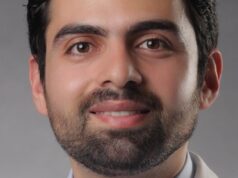
The modified Rankin scale (mRS) is something of a default clinical outcome metric in many contemporary stroke studies, but—as Eva Mistry and Paul Wechsler (both Cincinnati, USA) write in this NeuroNews guest article—represents an imperfect method for measuring success, and the time may therefore be right to re-evaluate its usage in stroke research.
John Rankin assumingly did not envision his Rankin scale from 19571 forming the basis for measuring success of stroke therapies in clinical trials. After being modified once2, the mRS is able to capture a broad range of an individual’s functional abilities, ranging from 0 (no symptoms) to 6 (death), with scores 1–5 describing increasing levels of global functional disability. This simplicity and intuitiveness, among other factors, contribute to the mRS being the most common endpoint for therapies that aim to reduce stroke-related disability. Nevertheless, it is often debated what role the mRS should play in future stroke trials.
Selection of a stroke trial endpoint is dependent on the natural history of the disease that a therapy is aiming to modify and the time window in which the therapeutic effect is most likely to be detected. Hyperacute stroke can cause impairment in several domains, including locomotion, cognition, vision, speech and arm function. These may lead to functional disabilities, such as inability to walk, care for oneself, and engage in social/vocational/recreational activities (global functional disabilities).
Acute stroke therapies aim to limit this disability. The mRS is thus an ideal endpoint to use in this context, as it effectively measures a patient’s entire spectrum of global functional disability. Recurrent stroke and chronic motor impairment have quite different natural histories, however. Few patients suffer a recurrent stroke3 and not all recurrent strokes cause measurable, incremental functional disability.4 Similarly, much of motor recovery after stroke does not translate into measurable changes in global functional disability.5 Therefore, the mRS is not ideally suited to capture clinically important changes in recurrent stroke and motor impairment that secondary stroke prevention and recovery trials aim to modify over long periods of time.
The mRS captures both broad and narrow treatment effects of stroke therapies. It is broad in that it describes a wide spectrum of an individual’s functional abilities—from no symptoms (mRS 0), to requiring help with essential tasks despite walking independently (mRS 3), to bedbound (mRS 5). This is advantageous because it provides patients and clinicians with a simple picture of how an individual can move and care for themselves, which are important functional abilities to patients. Yet, it also paints a narrow picture in that it does not fully describe how an individual is functioning in all life domains. A patient may have minor language difficulty that does not prevent them from doing their usual activities (mRS 1). How do these symptoms affect their emotional, cognitive and psychiatric wellbeing? These types of impairments that affect patient quality of life are not reliably captured by the mRS.
Many opportunities exist to modify and supplement the mRS with endpoints that reflect a wider range of outcomes that are important to patients and that inform clinical practice. The utility-weighted mRS (UW-mRS) converts the mRS into a more patient-centred outcome. In this approach, a ‘utility value’—the desirability of a health state to the patient as measured by patient health-related quality of life6—is assigned to each category of the mRS. Rather than clinicians defining a ‘good outcome’ after a stroke treatment as living independently (mRS 0–2)7, the outcome using the UW-mRS is how patients value their functional status.
There are calls for other patient-centred outcomes to be included in trials, such as quality-of-life measures, social functioning measures, and leisure or home time. Uptake of these more patient-centred outcomes is slow.8 The reasons for this are likely multifactorial, but one legitimate concern is that factors other than biologic effects of treatment—such as cultural and social constructs—highly influence these outcomes.9 Further research is needed to understand how patient- and societal-level factors influence a patient’s perception of their outcome, to facilitate controlling for these factors in future trials. Use of domain-specific outcomes that measure explicit stroke-related deficits (motor, visual, cognitive etc.) rather than global functional abilities may prove effective in capturing small but clinically meaningful changes in patient functioning that affect quality of life.10
In addition, the separation of efficacy and tolerability endpoints may contribute to some therapies proven efficacious in trials not being routinely implemented into clinical practice because of side-effects and logistical challenges. A hypothetical trial may establish efficacy of a repetitive therapy for motor recovery but at the cost of significant patient fatigue and adherence difficulty. Utility functions that mathematically incorporate multiple endpoints into a single measure could make trials more representative of clinical practice by balancing efficacy and tolerability. The ongoing SISTER trial (NCT05948566) utilises this novel methodology to balance intracerebral haemorrhage (safety) and neurologic improvement (efficacy) outcomes to find the best dose of a novel drug that facilitates thrombus resolution.
Lastly, it is important to keep in mind that development and implementation of these novel endpoints should not occur without meaningful engagement of stakeholders—such as patients, caregivers and clinicians (physicians, nurses, therapists, and more).
In summary, while the mRS will continue to play a major role in stroke trials given its established validity, importance to patients, and ease of interpretation, its modification and/or supplementation to capture patient-centrality will allow stroke therapies to demonstrate efficacy in many more meaningful domains than only global disability.
References:
- Rankin J. Cerebral vascular accidents in patients over the age of 60. II. Prognosis. Scott Med J. 1957; 2: 200–15. doi: 10.1177/003693305700200504.
- Farrell B, Godwin J, Richards S et al. The United Kingdom transient ischaemic attack (UK-TIA) aspirin trial: final results. J Neurol Neurosurg Psychiatry. 1991; 54: 1044–54. doi: 10.1136/jnnp.54.12.1044.
- Robinson D J, Stanton R, Sucharew H et al. Racial Disparities in Stroke Recurrence: A Population-Based Study. Neurology. 2022; 99: e2464–73. doi: 10.1212/WNL.0000000000201225.
- Hobeanu C, Lavallee P C, Charles H et al. Risk of subsequent disabling or fatal stroke in patients with transient ischaemic attack or minor ischaemic stroke: an international, prospective cohort study. Lancet Neurol. 2022; 21: 889–98. doi: 10.1016/S1474-4422(22)00302-7.
- Erler K S, Wu R, DiCarlo J A et al. Association of Modified Rankin Scale With Recovery Phenotypes in Patients With Upper Extremity Weakness After Stroke. Neurology. 2022; 98: e1877–85. doi: 10.1212/WNL.0000000000200154.
- Feeny D. A utility approach to the assessment of health-related quality of life. Med Care. 2000; 38(9 Suppl): II151–4. doi: 10.1097/00005650-200009002-00022.
- Saver J L, Chaisinanunkul N, Campbell B C V et al. Standardized Nomenclature for Modified Rankin Scale Global Disability Outcomes: Consensus Recommendations From Stroke Therapy Academic Industry Roundtable XI. Stroke. 2021; 52: 3054–62. doi: 10.1161/STROKEAHA.121.034480.
- Hostnik J S, Strong B, Reeves M J. Utilization and Reporting of Patient-Reported Outcome Measures in Randomized Clinical Trials of Acute Stroke (2010-2020). Stroke. 2024; 55: 1174–80. doi: 10.1161/STROKEAHA.123.046209.
- Lees K R, Khatri P. Stroke Treatment Academic Industry Roundtable Recommendations for Individual Data Pooling Analyses in Stroke. Stroke. 2016; 47: 2154–9. doi: 10.1161/STROKEAHA.116.012966.
- Cramer S C, Lin D J, Finklestein S P. Domain-Specific Outcome Measures in Clinical Trials of Therapies Promoting Stroke Recovery: A Suggested Blueprint. Stroke. 2023; 54: e86–90. doi: 10.1161/STROKEAHA.122.042313.
Eva Mistry is an associate professor in the Department of Neurology and Rehabilitation Medicine at the University of Cincinnati (Cincinnati, USA), a board-certified vascular neurologist, and a stroke clinical triallist. She is currently a fellow of the American Heart Association/American Stroke Association and an active member of the American Academy of Neurology, and serves as a senior associate editor of the journal Stroke. As a researcher, Mistry focuses on novel clinical research methods to ensure efficient translation of innovation to stroke patient care.
Paul Wechsler is a vascular neurology fellow at the University of Cincinnati in the Department of Neurology and Rehabilitation Medicine. He is also receiving clinical research training as a National Institutes of Health T32 fellow. His academic interests include acute stroke treatments, novel clinical trial design, and clinical research informatics.
The authors declared no relevant disclosures.









